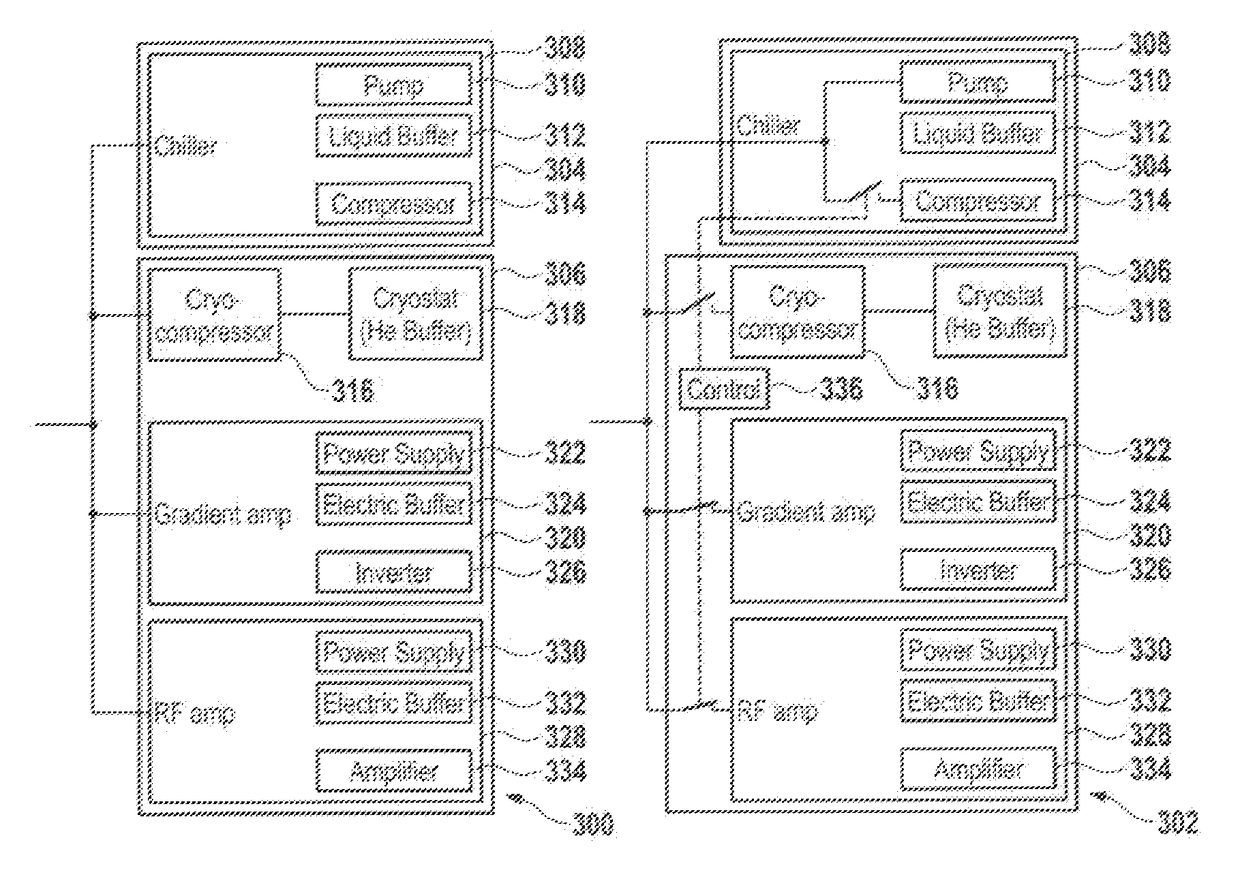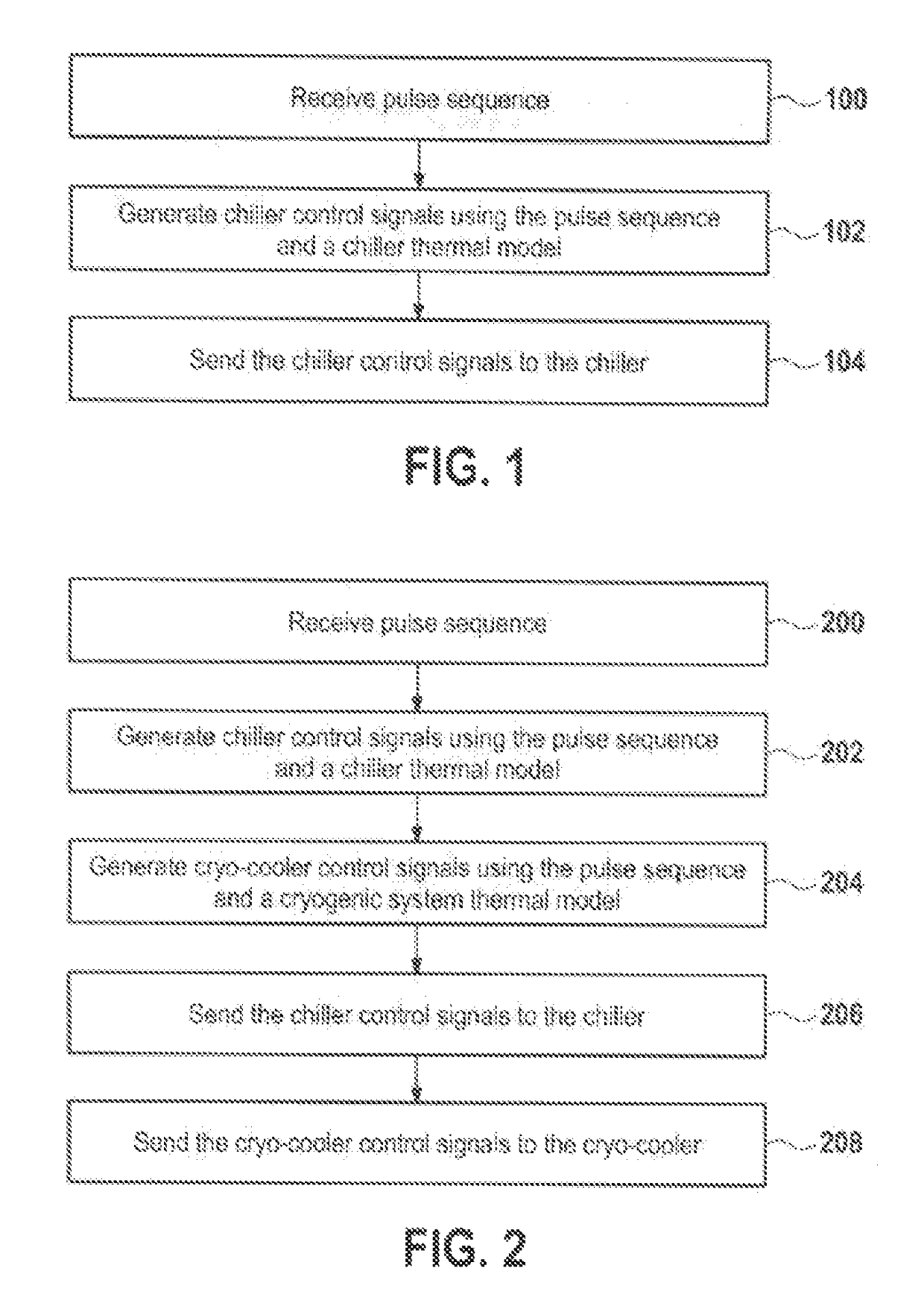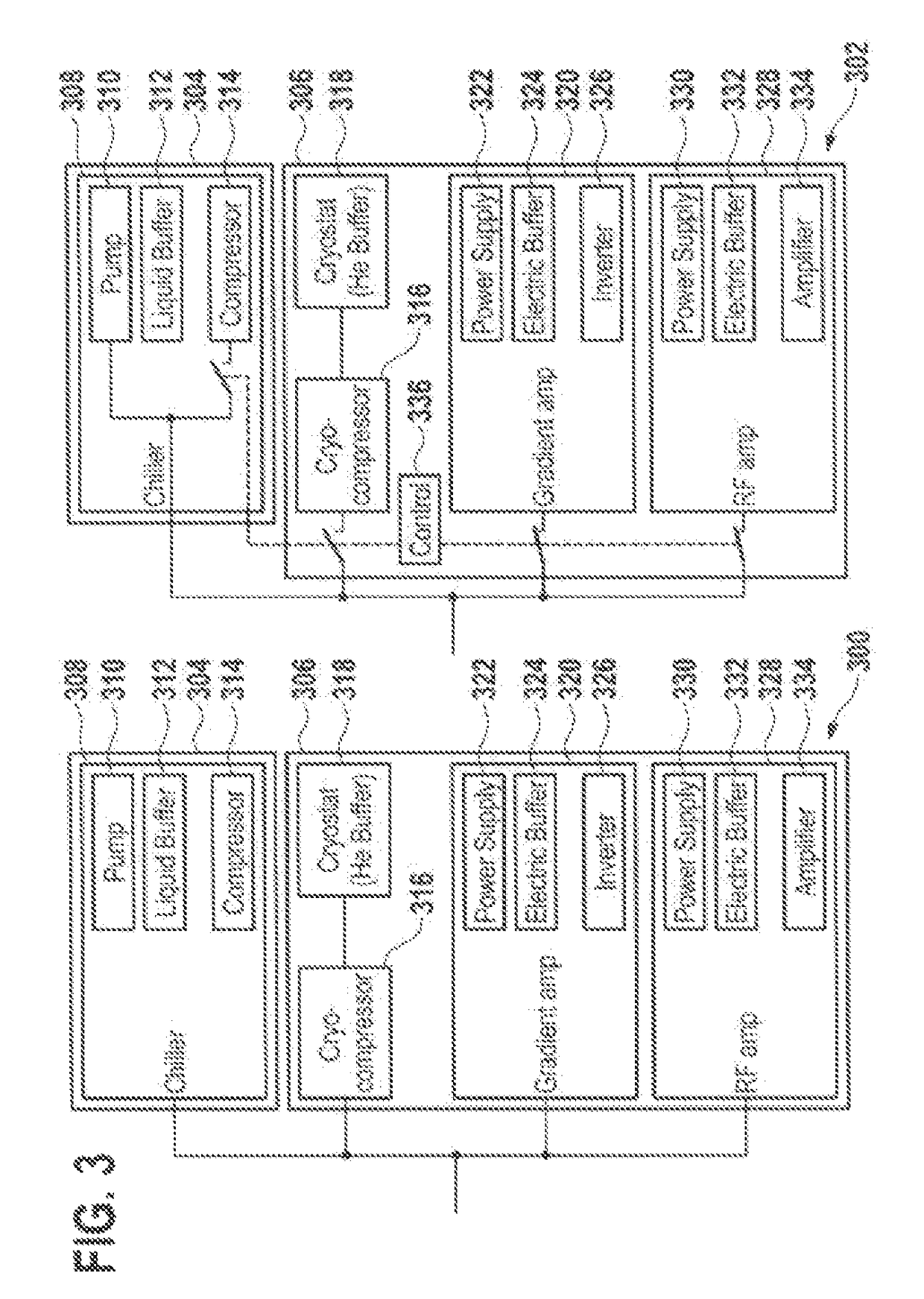Reduction of peak electrical power consumption in magnetic resonance imaging systems
a technology of magnetic resonance imaging and peak electrical power consumption, applied in the field of magnetic resonance imaging, can solve the problems of many underdeveloped countries without electrical infrastructur
- Summary
- Abstract
- Description
- Claims
- Application Information
AI Technical Summary
Benefits of technology
Problems solved by technology
Method used
Image
Examples
Embodiment Construction
[0051]Like numbered elements in these figures are either equivalent elements or perform the same function. Elements which have been discussed previously will not necessarily be discussed in later figures if the function is equivalent.
[0052]FIG. 1 shows a flow chart which illustrates a method according to an embodiment of the invention. First in step 100 a pulse sequence is received. Next in step 102 chiller control signals are generated using the pulse sequence and a chiller thermal model. For instance the pulse sequence could be parsed and using the thermal model a plan could be used to decide when the compressor of the chiller should be switched on or off. Finally, in step 104, the chiller control signals are sent to the chiller.
[0053]FIG. 2 shows a flow chart which illustrates a method according to a further embodiment of the invention. In step 200 a pulse sequence is received. Next in step 202 chiller control signals are generated using the pulse sequence and a chiller thermal m...
PUM
 Login to View More
Login to View More Abstract
Description
Claims
Application Information
 Login to View More
Login to View More - R&D
- Intellectual Property
- Life Sciences
- Materials
- Tech Scout
- Unparalleled Data Quality
- Higher Quality Content
- 60% Fewer Hallucinations
Browse by: Latest US Patents, China's latest patents, Technical Efficacy Thesaurus, Application Domain, Technology Topic, Popular Technical Reports.
© 2025 PatSnap. All rights reserved.Legal|Privacy policy|Modern Slavery Act Transparency Statement|Sitemap|About US| Contact US: help@patsnap.com



